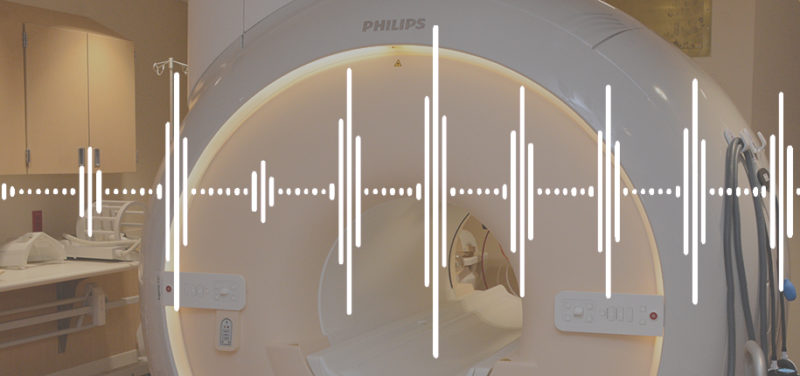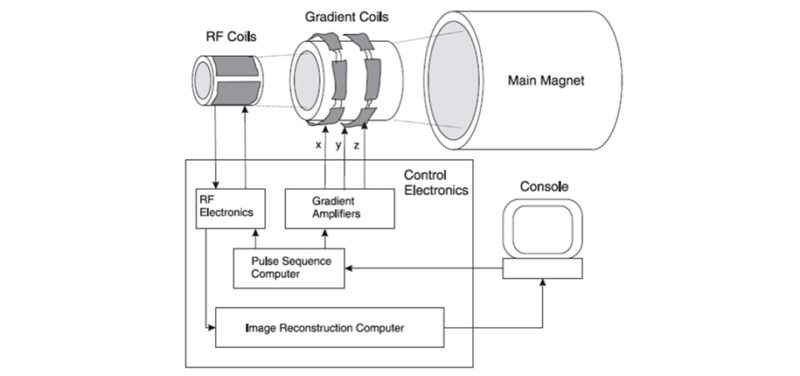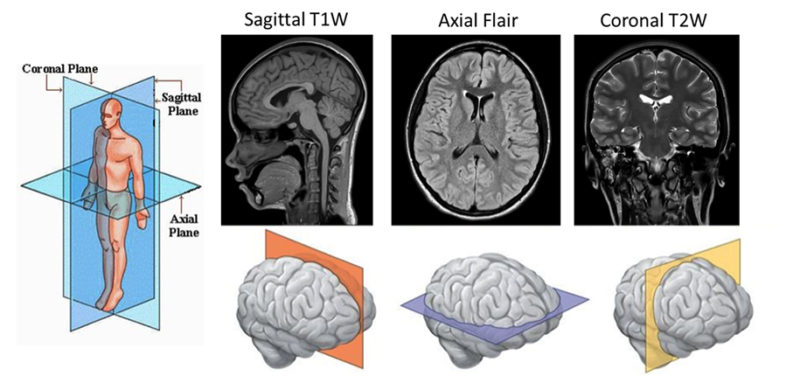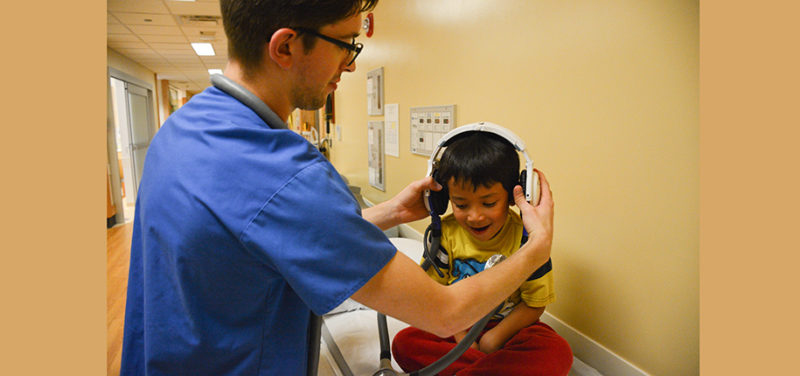
Why are MRI scans so loud?
To answer this question, we must first review a few basic facts you may or may not know about MRI. For starters, your typical MRI is something called a superconducting magnet and it is surrounded by liquid helium within the case of the machine. The strength of this superconducting magnet is measured in units called Tesla (1 Tesla = 10,000 gauss). At our hospital we have both 1.5 Tesla and 3 Tesla MRI scanners. As compared to Earth’s magnetic field of 0.5 gauss, these magnets are incredibly powerful and have high amounts of current (electricity) requirements. During active MRI scanning (i.e. when a patient is being scanned and images are being acquired) there are high intensity loud sounds. These sounds come from the MRI gradient coils which are created by loops of wires carrying electrical currents. The MRI superconducting magnet is surrounded by three sets of gradient coils that carry currents in different directions to produce a magnetic field in the X, Y and Z plane direction. The combination of the three sets of gradient coils driven by the high energy gradient amplifiers (rating: 2000V, 500 Amps) is used to localize the position of the tissue or organ for which the picture is being acquired.
Since the gradient coils are operating within a large magnetic field and as large amounts of electrical current passes though the gradients and rapidly switch from positive to negative and back, the gradient coils expand and contract (you could think of it as vibrating) very rapidly within an extremely short amount of time (milliseconds). This rapid change in currents adds a Lorentz force on the gradient coils and this generates the loud noise due to the mechanical stress on these coils. The noise gets amplified even more inside the hollow scanner; just like inside of a drum.
 Image: Contributed by Suraj Serai, PhD.
Image: Contributed by Suraj Serai, PhD.
Why are there different kinds of these loud noises?
Each MRI pulse sequence produces a characteristic noise based on its gradient current waveform. During a MRI scan different types of pulse sequences are used such as 2D and 3D T1W, T2W, Diffusion etc. along with different orientations such as Axial, Coronal, Sagittal or Oblique. The different sequences help your doctor look at pictures of the inside of your body in different contrasts (shading), orientations (angles) and coverages (area included in images). Each different sequence has a unique noise pattern, like its own audible signature.
 Image: Contributed by Suraj Serai, PhD.
Image: Contributed by Suraj Serai, PhD.
Audio: Contributed by Charles Dumoulin, PhD.
How do I protect my ears?
The noise level during active scanning is similar to the noise level of a jackhammer at a construction site. MRI noises may cause discomfort, anxiety and temporary hearing loss if proper ear protection is not used. Ear plugs and headphones are always used for the patient and for anyone who stays within the MRI scanner room during active scanning.

Is it possible to make MRI scans not so noisy?
MRI research scientists have been working hard on designing sequences that make less noise without compromising time and/or image quality. New techniques (for both software and hardware) are being tested to reduce the overall MRI scanner noise. On our new MRI scanners we have the technology to use low noise imaging sequences, but these also come with an image quality penalty and therefore have not been approved for the diagnosing of a clinical study by our Radiologists. Although the image quality is still being addressed for these low noise imaging sequences, we are continuing to research and seek out any technology that will help your child complete their study stress free. As advancements progress, you’d best believe Cincinnati Children’s will be there to bring them to you and your children.
Contributed by Suraj Serai, PhD and edited by Tony Dandino, SPEC-MR QUALITY.
